PRIMARY 4 ArtS and Crafts

12MONTH LICENCE DIGITAL PROJECT INCLUDED
Globalaction

Operation Planet Earth is an educational project by Anaya for Primary Education.
The following people have participated in this project:
Editor: Tania Llorens, Anabel Arasanz, Paolo N. Gallucci.
Art and design: Patricia G. Serrano, Paz Franch.
Illustrations: Inés Burgos.
Layout: J&M Artes gráficas.
Proofreading: Mercedes Pérez.
Translator: Nicola Shepherd.
Graphic edition: Samanta Herrera, Nuria González.
Photography: AGE Fotostock; Album; Archivo Anaya (6x6 Producción Fotográfica; Cosano, P.; Leiva, Á.; Martin, J.); Biblioteca Nacional de España; Cordon Press; Dreamstime; GettyImages; iStock/GettyImages; © Tatebanko Paper Diorama by It’s A Beautiful Day Ltd.; The Albertina Museum, Viena; The Metropolitan Museum, Nueva York (Colección Howard Mansfield, compra, Fondo Rogers, 1936) (Fondo Fletcher, 1926; compra, legado Frederick P. Huntley, 1958; legado Joseph Pulitzer, 1966) (Legado de Mary Jane Dastich, en memoria de su marido, el general Frank Dastich, 1975) (Regalo de Christen Sveaas, en celebración del 150 aniversario del Museo, 2019); Sargadelos; 123RF and collaborators.
This work may contain links to third-party pages and websites, which ANAYA does not edit, control, supervise and/or maintain. ANAYA therefore expressly declines any responsibility for the information contained in the aforementioned pages and websites.
Arts And CrAfts 4 GLOBAL ACtIOn - BL002039 - 3101002
© Text: Beatriz Basanta Pernas, Paula Pancorbo Battaglio, Beatriz Velázquez Redondo, 2023.
© This edition: GRUPO ANAYA, S.A., 2023 - Valentín Beato, 21 - 28037 Madrid - ISBN: 978-84-143-3082-1
D. L.: M-7969-2023 - Printed in Spain.
All rights reserved. No part of this publication may be reproduced, stored in a retrieval system, or transmitted, in any form or by any means, electronic, mechanical, photocopying, recording, or otherwise, without the prior permission of the publishers.

What will you learn?
LEARNING SITUATION PLAN OF ACTION
1 Taking care of yourself and others
Learn to lead a healthy life and promote the well-being of the people around us.

LOOK CREATE BUILD AND PAINT
1.1 The human body
• The body’s outline
• Canon of proportions
• Hand expressions
• Bodies that speak
1.2 Fashion
• Design and geometry in fashion
• The accessories of the ‘Dama de Elche’
• Jewels throughout history
• Art styles: Yves Saint Laurent and Elsa Schiaparelli
Representing natural shapes
Prevent and reverse the degradation of our planet, and urgently take action to do so within our own environment.
3 Creating innovative objects

Understand the need for widespread use of the Internet and achieving universal access to information.
2.1 Nature
• The appearance of trees
• Lines in nature
• The shapes of animals
• The transition from 2D to 3D
2.2 The universe
• The universe in motion
• Black and white cinema
• Splash art technique
• Book illustrations
• Art styles: Ángeles Santos and Wassily Kandinsky
• A body in motion
• Well-proportioned bodies
• Realistic hands
• A mannequin couple
Build:
• Personalising my pencil holder (page 65)
• My Christmas star (page 67)
• Fashion in the style of Sonia Delaunay
• A great Dame
• A good luck charm
• Create your own style
Paint:
• Sunset in the savannah (page 73)
• The shapes of trees

• The line as a means of expression
• An animal based on its structure
• 3D natural elements
Build:
• Celebrating World Water Day (page 69)
Paint:
• Motion in comics
• A coloured film frame
• Your version of the universe
• Illustrating a story
• Create your own style
3.1 Shape
• The magic of volume
• Optical art
• Assemblage technique
3.2 Colour
• Harmonic colours
• The psychology of colour
• The magic of colour
• Colours at night
• Art styles: Alexander Calder and Tamara Lempicka
• Objects with depth
• An Op Art design
• A sculpture with recycled materials
• Spring leaves (page 75)
• The great wave (page 77)
• Chromatic harmony
• An eye-catching label
• A two-tone image
• A night scene
• Create your own style
Build:
• A fortress on top of a mountain (page 71)
Paint:
• Celebrating Environment Day (page 79)
Good health and well-being
Industry, innovation and infrastructure
PAGE PAGE
• SDG 7
Life on land 2
PAGE 27 47
you think? say a species is endangered when all the of that species may stop existing.





























There are two topics in each unit





Plan of action Art styles The line as a means of expression CREATE Colour following the movement of the brushstrokes. Look at the example of Van Gogh's work. Country Road in Provence by Night (1889), Vincent van Gogh. Vincent van Gogh (1853-1890) was one of the most important painters of post-Impressionism. He had very characteristic brushstroke formed by using a succession of lines. By varying the type of brushstroke, he managed to reinforce the expressiveness in his paintings. 46 U2 What have I learned? PORFOLIO 1 Assess your group work and complete. Working with a partner and listening to the other person's opinion helps me to… Talking to the rest of the class and reaching a common conclusion makes… By correcting my point of view after assessing other opinions, learn that… Colour how your attitude has been in class during the course. Choose two activities that you are good at and two that you need to improve. Write them down and complete. Recognising types of trees. Drawing animals from their body structure. Creating a 3D still-life. Drawing motion lines in comic. PLAN OF ACTION have attended and have made an effort to learn. have obtained positive results in many activities. have taken initiatives and increased my creativity. have participated in groups and have learned from the rest of the class. Acceptable need to improve it P O R T F O L I O 44 U2 The universes of Ángeles Santos and Wassily Kandinsky What other geometric shape could you imagine a world to be? Un mundo (1929), Ángeles Santos. Several Circles (1926), Wassily Kandinsky. Ángeles Santos (1911–2013) painted this painting when she was only 18 years old. The inspiration for this work was obtained from the art magazines of the time that allowed her to discover the work of other artists such as Joan Miró. Wassily Kandinsky (1886–1944) made this abstract painting from different sized, coloured circles. Although his intention was not to represent space, the contrast of the dark background with the circular and superimposed shapes can lead us to interpret as representation of the universe. Search the Internet for information about the life and work of these painters. ART STYLES ¡¡ SDG 15
Raise awareness of real threats to animals and promote actions to prevent the extinction of more species. Plan of
action
Skills you will focus on: Look and Create Build Paint 77 Paint Look and colour following the steps. The great wave U3 The Great Wave off Kanagawa (1830-1833), Katsushika Hokusai. Paint the sky with very watery mixture of brown and a bit of magenta. Then the Leave the crest of the waves and the volPaint the waves with two blues. Let dry. For the foam, use toothpick to apply white poster paint, as in the example on the left. 71 Roof The wall's circular tower (fits between wall and 8) 3 10 1 1 3 5 8 10 2 5 8 7 2 A fortress on top of a mountain Glue the tabs that have got the same number together. U3 Build PORFOLIO 1 Draw faces to show how you felt doing the activities below. Following the steps to draw a portrait. • Using perspective to create a landscape. Modelling the Infanta Margarita in plasticine. • Using curved lines to create volume. Creating a mural to condemn an injustice. • Creating a new look for Las Meninas. Identifying types of line. 2 Colour to show how you did the activities below. PLAN OF ACTION In this unit you have seen that art only belonged inside of buildings in the past. You have learned that we can now find art in the street, making our surroundings more beautiful. Using the CAF (consider all the factors) technique, come up with ten commandments to promote an inclusive and equal society, so that everyone in your neighbourhood can access art and culture. 3 1 2 4 6 7 10 9 8 Universal access to art and culture 5 Use my imagination and draw comics with onomatopoeias. Divide a face into six parts to draw a portrait. Create volume with parallel curved lines. can do this well I’m still learning can do better Go to anayaeducacion.es My progress PORTFOLIO Icons Cooperative learning Emotional learning Gameplay Learning to think ICT SDG Assessment 30 U2 Lines in nature LOOK 2.1 Nature Look at the images and match with a type of line. The line line is expressive because gives shape to what we draw. A line can be very different depending on the material we use. Drawing line with marker is not the same as drawing with brush, freehand or using ruler. line can be more expressive, colder, more dynamic... depending on the type of line we choose. Look at the types of lines. VERTICAL DIAGONAL BROKEN WAVY ZIG-ZAG CURVE
This is your digital project
This project offers you the whole course content in an active textbook, as well as a wide range of other resources. Discover a whole new way of learning that is simple, intuitive and compatible with any platform and device.
How can you access your book?
You’ll find all of the information you need on the first page of the book.

What will you find?
A huge variety of resources: it is so much more than a simple copy of the printed book. You’ll be able to use it to: Practise with interactive activities


Learn with audios, videos, a game room...




Test yourself with self-assessments, portfolios...





It is: A global response to a diverse learning environment.
Intuitive
Easy to use.
Multi-device
You can use it with any kind of device (computer, tablet, smartphone...).

Downloadable
It allows you to work without an internet connection and download it on more than one device.

Sincronisable
Any changes you make are synchronised automatically when you connect any of the devices you are using it on.

Universal Compatible with all operating systems, and the most widely used virtual learning environments (VLE) and learning management systems (LMS) in schools.


U2 2.2 The universe There are wonderful shapes in the universe. In a planetarium you can learn what outer space is like and see stars, planets, asteroids... Look at these shapes and write what you think each one is. LOOK The universe in motion 36 Organic shape Spherical shape Star shape Spiral shape
Imprimir Borrar Anterior Ayuda Imprimir Borrar Ayuda
In my pencil case

Thick felt-tip pens







Lead pencil



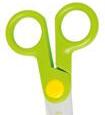

Coloured pencils


Recycled materials

Tempera paints





Coloured paper





Glue stick


Scrap paper

6
To
What do you think?
Our daily habits (food, exercise, rest) determine our health.
The facts
A good education helps people learn how to live healthily.
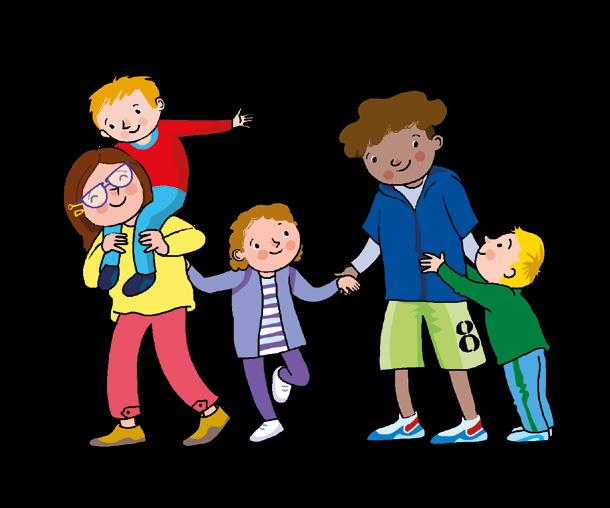

of action

3
live to the fullest, we must lead a healthy life. 1 The human body 2 Fashion
Learn to lead a healthy life and promote the well-being of the people around us. 7
1 Taking care of yourself and others
The body's outline
Look at these silhouettes and the sensation of movement that they transmit despite only being dark shapes.


To create a sensation of movement, first we must draw a basic outline of the human skeleton. In this way your representation of the figure will be much more realistic and correct.

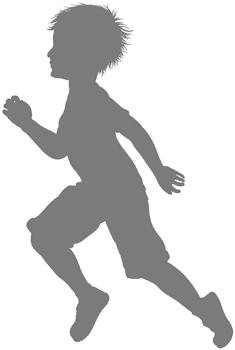
Using a red felt tip pen, draw the basic outline on the figures that appear below. Refer to the model.


8 1.1
The human body
LOOK
CREATE


A body in motion
Look. Then, follow the steps and draw the children in motion.



9
1 2 3 1 2 3
Canon of proportions
Representation of the human body




Sculptors in Classical Greece determined ideal proportions for representing a human body.

This canon varied depending on the age of the body being represented. Young boys and girls have proportionally larger heads, so the canon is different.
At present, art represents the human figure with different proportions and shapes; this is a more realistic reflection of the great diversity of people that exist in the world.
Look at the eight-headed canon of the Apoxyomenos. Now look at the photos. What canon does each one follow? Measure the head and repeat the measurement along the body. Look at the example and see how the proportions vary at each age.
1 2 3 4 5 6 7

10 U1
LOOK 1.1 The human body
Apoxyomenos (325 BCE), Lysippos.
CREATE
Well-proportioned bodies
Look, follow the steps and draw a boy and a girl. Colour however you like.




The proportion of the human body in childhood

The height of girls and boys between the ages of 6 and 12 varies between 6 and 7 heads.


11
1 2 3 1 2 3
Hand expressions
Our hands allow us to touch, grasp, feel, hold, manipulate, explore, draw, model... and so on. In the plastic arts they are a fundamental part of artistic creation.


Did you know that there is a language that is conducted using your hands? Look and find out your name.

Now, sign your name in sign language.

12 U1
LOOK 1.1 The human body
The Cathedral (1909), Auguste Rodin.
The hand (2005), Fernando Botero.
Realistic hands
Follow the steps and draw the back and the palm of the hand. Colour.











13
1 2 3 1 2 3
CREATE Back of the hand Palm
Bodies that speak
Body language
Some artists make use of articulated drawing mannequins to represent the human body instead of using models. These mannequins make it easier to understand postures that the body can adopt when we move, play sports, dance, etc.



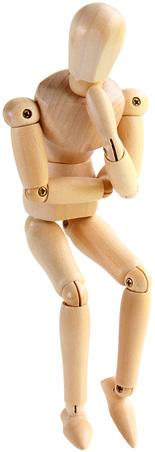
By looking at gestures and body postures, we are able to interpret what people want to convey to us. Look and match.

14 U1
LOOK 1.1 The human body
thinking relaxed happy in a hurry
Bodies that speak

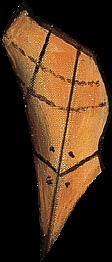






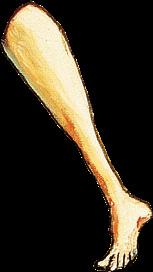




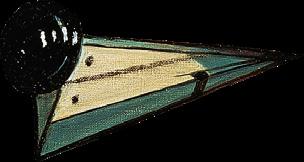
Cut out and save for the next page.





15
CREATE


A mannequin couple
Look and arrange the pieces from the previous page and glue them. Then, imagine a dialogue between the two characters.

In this piece the Italian painter Giorgio de Chirico (18881979) transports us to a world of fantasy. He simplifies the human body and brings mannequins to life. Hector is a hero of ancient Greece and Andromache is his wife. The couple say goodbye. Hector leaves for a fight from which he will not return.


17
Hector and Andromache (1931), Giorgio de Chirico.
Hector and Andromache
Design and geometry in fashion

The artist Sonia Delaunay presents her paintings along with her textile designs. She uses many polygonal shapes. Her work is also based on colourful compositions using circumferences, circles, semicircles...


Search the Internet for more information about this artist's work.
Sonia Delaunay (1885-1979) was a French painter, who also designed fashion. Her works are characterised as being abstract and using geometric forms such as concentric circles and semicircles.

U1 1.2 Fashion
LOOK
18
Exhibition with paintings, designs and textiles by Sonia Delaunay (2017), Museo Thyssen-Bornemisza, Madrid.
CREATE




Fashion in the style of Sonia Delaunay

Look at the examples and create your own piece of clothing using geometric shapes.

19
Rhythm (1938), Sonia Delaunay.
Simultaneous Dresses (1925), Sonia Delaunay.
The accessories of the ‘Dama de Elche’
This wonderful Iberian archaeological piece represents the bust of a woman dressed in a tunic and adorned with necklaces and a beautiful headdress with buns, which are very characteristic.
The frontal and hieratic posture of the Dama de Elche, together with her characteristic accessories make her immediately recognisable.

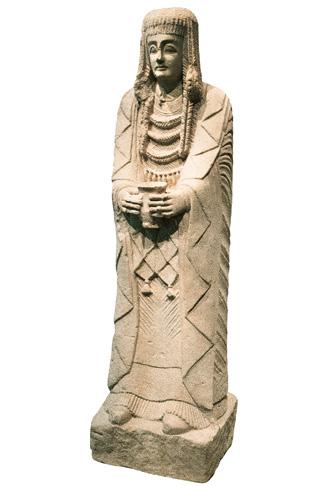
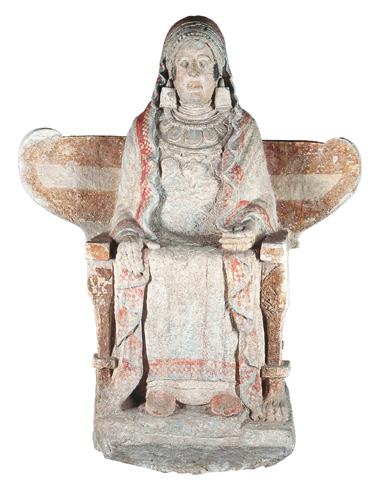

Look at these other Iberian sculptures and explain their similarities.
What are your conclusions?
20
LOOK 1.2 Fashion
Dama de Elche (5 th-4 th centuries BCE).
Lady of Baza (4th century BCE).
Lady of Cerro de los Santos (3rd century BCE).
Lady of Guardamar (400 BCE and 370 BCE)
A great Dame






21
Observe the example and draw the 'Dama de Elche'. Then, colour. CREATE 1 2
Jewels throughout history
Antique jewellery: much more than accessories
In ancient times, jewellery was much more than body decoration. It was used as a symbol (of power, social/religious status…) and included protective charms.
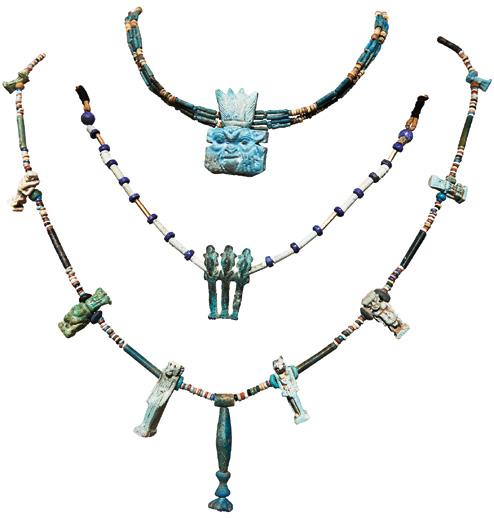

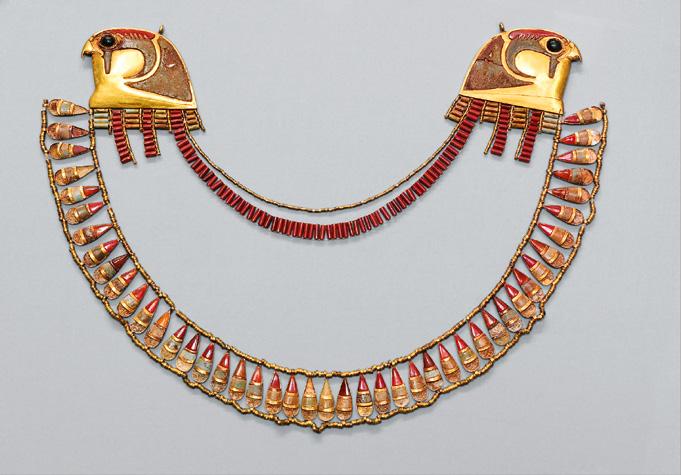
These jewels were inspired by forms of nature, animals and human figures, to which they gave a special meaning.

22
Egyptian anklet with snakes and a winged scarab holding a solar disk. Royal necropolis of Tanis, 21st dynasty.
LOOK 1.2 Fashion
18th Dynasty Egyptian necklace (1479-1425 BCE).
Egyptian pectoral in the form of a winged scarab from the treasure of Tutankhamun, 18th Dynasty (1325 BCE).
Egyptian faience necklaces with charms (715-332 BCE).
U1
Observe these ancient jewels, choose one, and imagine what protection it provided to its owner.
CREATE

A good luck charm
Look, complete and colour. Look at the original.



Radial symmetry

Look at the circular pendant: the four spokes (dashed lines in the drawing) divided into four equal parts. It has radial symmetry.


23
Pendant based on an ancient Iberian shield.
ART STYLES
The fashion of Yves Saint Laurent and Elsa Schiaparelli
Yves Saint Laurent stated that ‘fashion is not art, but to make clothes you have to be an artist’. He made a series of dresses that were Inspired by Piet Mondrian's paintings.


What everyday object would you choose to make a very original hat?
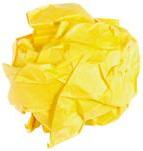
Elsa Schiaparelli used a shoe with great originality to create the design of a unique and fun hat.


24 U1
Mondrian Dress (1965) by Yves Saint Laurent based on Composition II in red, blue and yellow (1921-1941), by Piet Mondrian.
¡¡
Shoe Hat (1937), Elsa Schiaparelli.
CREATE YOUR OWN STYLE





Choose an artist and look for information on the Internet. Then, draw clothes inspired by the piece you like most by that artist.

25
PLAN OF ACTION
In this unit you have seen how the human body is a fantastic tool that helps us to express ourselves, move, enjoy and live fully. We must respect and care for it daily to keep it healthy and in optimal condition.
Using the CAF technique (consider all factors) think of ten healthy daily habits that promote a healthy life and promote well-being within your environment.
What have I learned?
1 Think about what you are best at and what you need to improve and order from 1 to 4. Then, complete.
Drawing a human figure using proportion.
Communicating my name in sign language.
Reproducing an image using a grid.

Using symmetry to create a charm.
Number 1 is my strength because…
To improve number 4, I must…
2 Complete to discover how you apply your learning.
Knowing my abilities and learning from my mistakes helps me to…

Collaborating with the class in a presentation has helped me to…

Making my emotions known has helped me to…

I have learned to listen to others through activities such as...

26 U1
PORFOLIO P O R T F O L I O
Go to anayaeducacion.es 3 1 2 4 6 7 10 9 8 Daily healthy habits 5

















































































































































